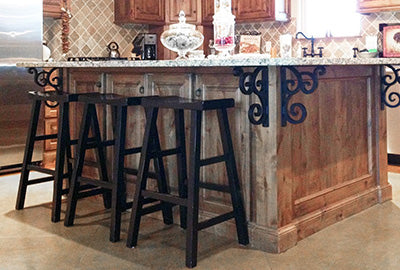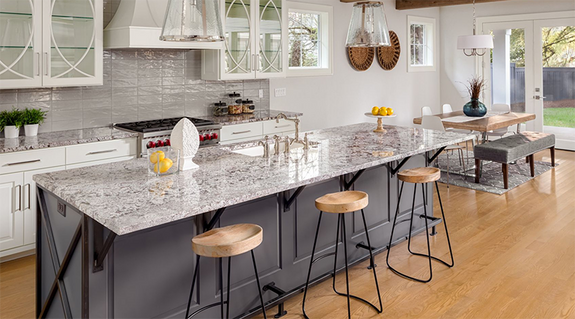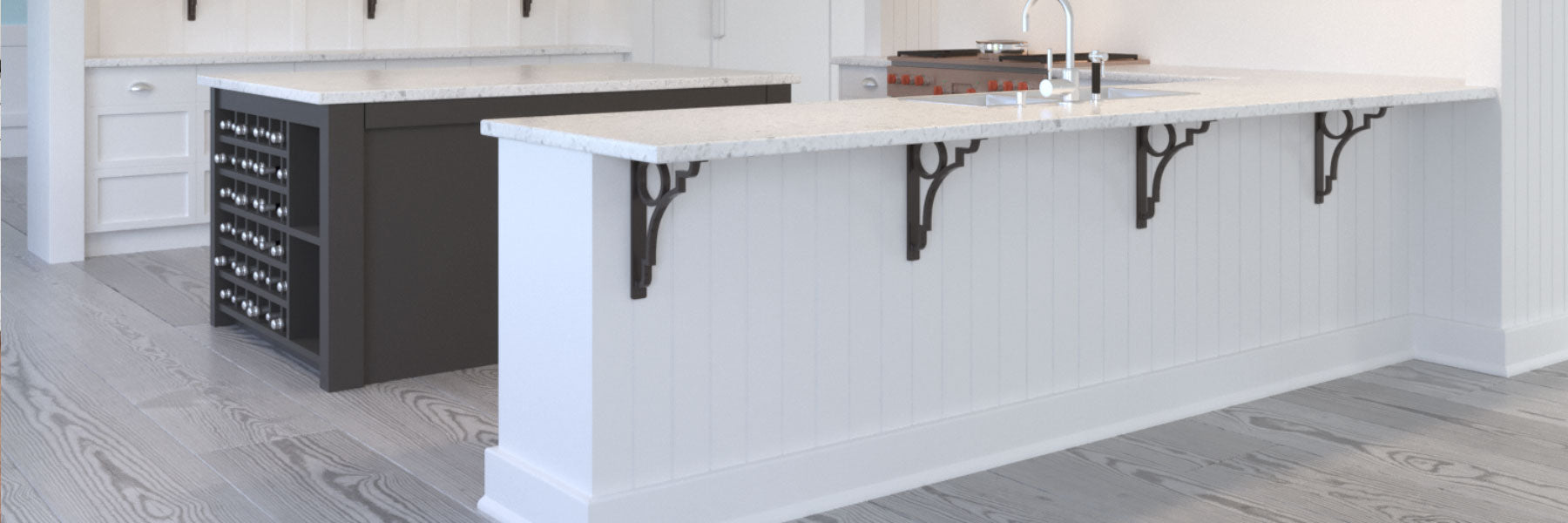IN-STOCK ITEMS SHIP WITHIN 1 BUSINESS DAY + FAST FREE SHIPPING | NEED HELP? (888) 971-3771
IN-STOCK ITEMS SHIP WITHIN 1 BUSINESS DAY + FAST FREE SHIPPING | NEED HELP? (888) 971-3771
Countertop Support Brackets
Mantel Brackets
Metal Shelf Brackets
Floating Brackets
Resources
- Corbel Installation
- Shelf Bracket Installation Guide
- Standard Front Mount Countertop L Bracket Installtion
- Hidden Island Countertop Bracket Installation
- Hidden Granite Countertop L Bracket Installation
- Hidden Granite Countertop Flat Bracket
- Floating Countertop Wall Bracket Installation
- Hidden Center Mount Countertop Bracket - Knee Wall
- Corbel Installation
- Shelf Bracket Installation Guide
- Standard Front Mount Countertop L Bracket Installtion
- Hidden Island Countertop Bracket Installation
- Hidden Granite Countertop L Bracket Installation
- Hidden Granite Countertop Flat Bracket
- Floating Countertop Wall Bracket Installation
- Hidden Center Mount Countertop Bracket - Knee Wall

Photo Gallery
Check out the inspiration!
Countertop Support Brackets
WHY IRON SUPPORTS?





Countertop support brackets are the quiet backbone of any overhang, the hidden muscle that lets a slab of stone float without a forest of legs. We bend ours from thick steel bar, torch the ends smooth, and drill clean holes so lag screws bite deep on the first try. Some homeowners want countertop brackets that show off a little curve and scrollwork, others prefer a counter support bracket that vanishes once the backsplash goes up, so we build both styles and let you choose.
Granite, marble, quartz, Corian, even that concrete top you saw on a blog, all of them weigh more than they look, which is why every heavy duty countertop support bracket gets crushed in a press before it earns a label. Numbers printed on the install sheet? They are the conservative ones, real tests run higher. Need countertop mounting brackets that disappear in an island breakfast bar? Grab the hidden line, a flat bar with a welded gusset that slips under the stone and never shows. Remodeling an old farmhouse and want a bit of ironwork peeking out? The decorative corbels come in raw, black, or oil‑rubbed and can take a sanding block if you like more rust than paint.
• Decorative Iron Corbels, visible, design‑forward, add texture under butcher block or reclaimed pine
• Hidden Support Brackets, out of sight, streamlined for modern kitchens and tight walkways
Pick the look first, the strength is already baked in, and if you need a hole shifted half an inch call, we can tweak a jig before lunch.
Countertop Support Brackets FAQ's
How much weight will one bracket actually carry?
How much weight will one bracket actually carry?
Our standard front-mount countertop L brackets are tested for roughly 125 lb each when they’re lag-screwed into solid wood. Hidden granite flat brackets nearly triple that, landing around 325 lb. The number matters less than the install: drive two 2 ½-in wood screws into a wall stud or top plate so the frame, not the drywall, takes the load. Crunch the math - three brackets at 125 lb each give you about 375 lb of capacity - and you can prop up a long quartz bar or butcher-block slab without stress.
How do I pick the right size and spacing for an overhang?
How do I pick the right size and spacing for an overhang?
Start by subtracting two or three inches from your overhang depth; that’s your bracket length. A twelve-inch bar top usually wants a ten-inch bracket. Keep the stone or wood no more than six inches past the bracket tip. Mount a bracket at every stud, sixteen to twenty-four inches on-center. On a ten-foot run that means five or six brackets. It looks like overkill, yet spreading the load keeps quartz from sagging and avoids hairline cracks down the road.
Can I use toggle bolts, masonry anchors, or metal studs?
Can I use toggle bolts, masonry anchors, or metal studs?
Directly into wood is Plan A, but there are work-arounds. Through drywall into a stud is fine - leave the sheetrock in place. Hollow walls can take ¼-20 toggle bolts, though you should cut the load rating in half. Solid concrete or block needs Tapcon-style screws or sleeve anchors, 3⁄16 in diameter or larger. Thin metal studs flex too much, so add a wood backer inside the stud bay before fastening the bracket. The rule of thumb is simple: if you can’t wiggle it by hand, the bracket can’t either.
Will the finish survive outdoors, in showers, or near the beach?
Will the finish survive outdoors, in showers, or near the beach?
The brackets are mild steel topped with a baked-on powder coat in black or white. That shell seals out moisture, so a covered porch, shower bench, or pool bar is no problem. In salty air give the metal a quick rinse and touch up scratches with matching paint. They aren’t stainless, yet coastal customers routinely get years of clean service. If you want a bit more forgiveness choose the black finish - it hides scuffs better and touch-ups blend in almost invisibly.
Join Our Mailing List

Shopping Cart
×Taxes and shipping calculated at checkout
Exact shipping dates and delivery date estimates are calculated on the next page based on your delivery address.
Your cart is empty.









































































































